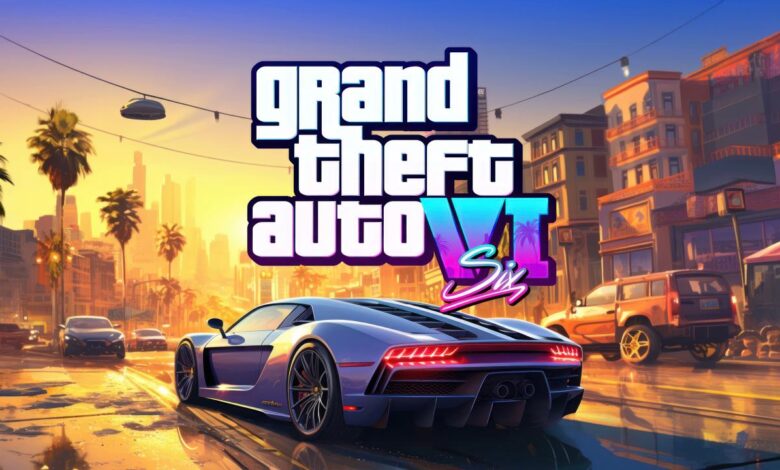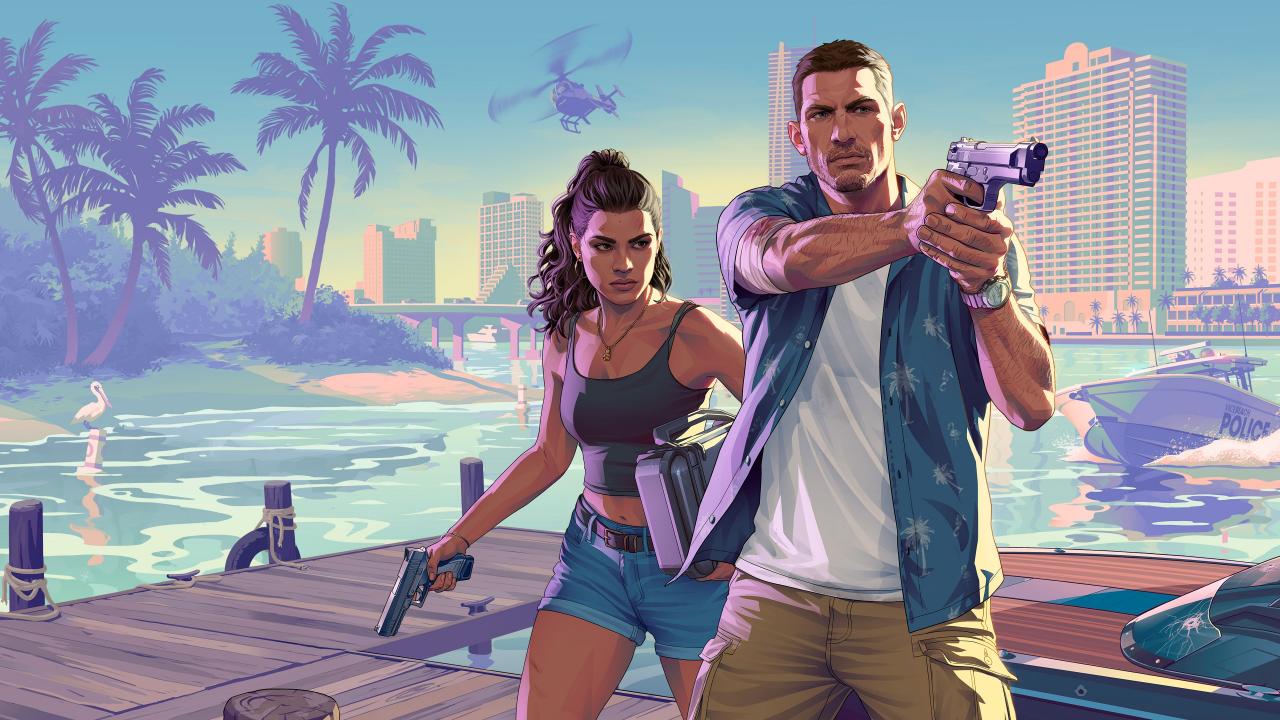Unlocking Vice City: GTA VI Storyline Predictions

The grand stage is set. After a decade of rumors, leaks, and feverish speculation, Grand Theft Auto VI (GTA VI) is poised to redefine open-world gaming.
The reveal trailer confirmed the return to Vice City and introduced a groundbreaking narrative element: a focus on a duo of protagonists, a male, Jason, and a female, Lucia.
This shift from a male ensemble to a mixed-gender pair, coupled with the deeply satirical, social media-drenched atmosphere shown in the trailer, opens up countless avenues for complex storytelling.
This isn’t just a guide to the game; it’s an in-depth analysis of the most compelling and plausible narrative theories surrounding Lucia and Jason’s partnership, their motivation, the game’s central conflict, and how Rockstar Games will leverage the chaotic landscape of modern-day Florida.
I. The Core Narrative: Bonnie and Clyde Rebooted

The most central and inescapable theory revolves around Lucia and Jason’s relationship, heavily inspired by the infamous outlaw couple, Bonnie and Clyde. However, in the context of GTA, this dynamic will be modernized and inherently flawed.
A. The “Ride or Die” Dynamic and its Breaking Point
The trailer strongly suggests a deep, volatile romantic relationship between Lucia and Jason, but GTA narratives thrive on betrayal and dissolution.
A. Lucia as the Instigator: Lucia is introduced first, immediately setting her up as the more experienced, driven, and aggressive partner. Her prison scene—where she states, “The only reason I’m here is ’cause I’m unlucky”—suggests she is a career criminal hardened by the system. She is likely the mastermind who pulls a more reluctant or less experienced Jason into the life of crime.
B. Jason as the Reluctant Enforcer: Jason’s quiet demeanor and lack of dialogue in the initial trailer suggest a few possibilities:
1. The Outsider: He could be an outsider or former legitimate citizen (perhaps a former street racer or small-time dealer) who got deeply involved with Lucia, making his criminal transformation more tragic.
2. The Loyalty Test: His ultimate storyline will likely center on his loyalty to Lucia being tested by moral conflict or external pressure (police, rival gangs). The game’s ending might hinge on whether he chooses the life, or Lucia.
C. The Inevitable Betrayal: The classic Bonnie and Clyde narrative ends tragically. Rockstar is unlikely to give them a happy ending. The core emotional arc might involve a single, unforgivable act of betrayal between them, driven by self-preservation, with the final missions forcing the player to choose which protagonist to control for the final, deadly confrontation.
B. The Vice City Setting as a Third Character
Vice City (modeled after Miami) and the rest of Leonida (Florida) will serve as a satirical, chaotic backdrop essential to the story.
A. Social Media Satire: The trailer is filled with clips directly mimicking viral, bizarre “Florida Man” news stories and TikTok content. The game’s main heists and missions will likely be intertwined with this spectacle culture, forcing Lucia and Jason to commit crimes that instantly become viral memes or national news.
B. The Hyper-Wealth Contrast: Vice City is known for its extreme wealth, luxurious yachts, and high-end real estate. The protagonists, likely starting from the trailer’s “Dirt Cheap” motels, will be driven by the stark contrast between their poverty and the unattainable hyper-wealth displayed by the city’s elite, making their crimes acts of social rebellion as much as theft.
C. The Swamp Conflict: The Florida Everglades setting will likely introduce a new dimension of crime: rural gangs, drug smuggling operations in the swamps, and confrontations with local authorities outside the big city, adding a dangerous, gritty counterpoint to the city’s neon-lit glamour.
II. Central Conflict Theories: Who are the Antagonists?
GTA games always feature a primary antagonist whose downfall motivates the final act. Given the dual-protagonist narrative, the conflict could be two-pronged.
A. The Cartel/Organized Crime Empire
A return to the 1980s Vice City theme suggests a deep dive into drug cartels, a conflict that Lucia’s background may directly feed into.
A. Lucia’s Past Debt: Lucia’s time in prison might be linked to a major cartel or organized crime syndicate (perhaps a modernized version of the Vercetti or Forelli families). She may owe them a massive debt or be forced to work for them upon release, with Jason pulled in to help settle the score.
B. The Foreign Infiltrator: The main antagonist could be a sophisticated, foreign-based cartel leader using Vice City as a hub for international smuggling. Their power and influence would be so vast that taking them down would require multiple, large-scale coordinated heists from both protagonists.
C. The Asset Theft: The duo might steal a high-value asset—money, drugs, or classified information—from the cartel early on, spending the rest of the game running from the organization’s relentless, brutal retribution.
B. The Police/Government Corruption Arc
The GTA series often targets governmental overreach and deep-seated police corruption. In Vice City, this could be the ultimate enemy.
A. The DEA/FBI Antagonist: A specific, relentless Federal Agent could be the primary chaser, similar to Agent Tenpenny in San Andreas. This character could be personally driven or deeply corrupt, using their power to frame or hunt Lucia and Jason for crimes they didn’t commit, or for witnessing a secret that could expose a massive conspiracy.
B. Florida’s Private Military Complex: Given modern trends, the antagonists might be linked to a private military company (PMC) or a shady security firm operating with impunity in Vice City, replacing the traditional police force in certain wealthy sectors. Lucia and Jason would fight a technologically superior, well-funded private army.
C. The Political Connection: The ultimate conspiracy could lead to a high-ranking state politician or governor who is benefiting from the city’s organized crime, making the final showdown a political assassination or an exposure mission.
III. Gameplay and Mission Structure Predictions

The dual-protagonist system and the Vice City setting will necessitate significant changes to the GTA mission structure, likely focusing on coordinated, high-stakes robberies.
A. Coordinated Heists and Role Specialization
The GTA V heist structure will be refined, emphasizing the unique skills of each protagonist.
A. Lucia’s Tech/Infiltration Role: Lucia’s likely criminal background will make her the expert infiltrator, safecracker, and tactician. Missions where precision hacking, lockpicking, or stealth is required will be controlled exclusively by her.
B. Jason’s Driving/Combat Role: Jason’s presumed role as the less refined muscle could make him the expert driver, aerial unit pilot, and heavy weapons specialist. He would be controlled during high-speed chases, dogfights, and frontal assaults.
C. The Mid-Mission Switch: Crucially, missions will feature dynamic mid-mission switching that is far more integral than in GTA V. For instance, Lucia might be scaling the outside of a skyscraper while the player quickly switches to Jason, who is providing sniper cover from a distant helicopter.
B. The Reputation and Influence System
The game could feature a system where the player’s actions affect their fame and notoriety within the chaotic social media environment of Leonida.
A. Viral Infamy: Successfully pulling off an outlandish stunt or using a unique getaway vehicle could boost your “Infamy Score,” attracting better clients, but also increasing the difficulty of police pursuit and the alertness of civilians.
B. Legal vs. Illegal Income Streams: The duo might have separate income streams—Lucia’s being strictly criminal, and Jason’s being some form of legitimate, but shady, business (like a chop shop or used car dealership). This separation of finances could lead to tension and unique missions.
C. Customizing Safe Houses: Safe houses will likely be more than just save points. They could be fully customizable hubs where the duo plans heists, manages their reputation, and stores unique collectibles, adding a deeper role-playing element.
IV. The Post-Game and Multiplayer Connection Theories
Rockstar is renowned for its expansive post-game content and the integration of its single-player world into the online experience.
A. The “Success or Failure” Ending Variation
The outcome of the main storyline could have a tangible impact on the single-player and online world.
A. Lucia’s Survival: If the player makes choices that favor Lucia’s survival, perhaps her presence (or her reputation) influences the types of random encounters or side missions available in the post-game.
B. Jason’s Fate: If Jason survives, he might inherit unique assets or properties that only unlock if he makes it to the end. The final confrontation’s choice will likely determine the entire mood and tone of the post-game Vice City.
C. The Epilogue Missions: Similar to Red Dead Redemption, there will likely be an extensive epilogue where the surviving character attempts to live a quiet life, only to be drawn back into crime by old enemies or the consequences of their past actions.
B. GTA Online and the Time Jump Theory
The connection between the single-player campaign and the multiplayer GTA Online remains a major point of interest.
A. The Time Skip: The single-player story is likely set in the present day. GTA Online could either run concurrently or, more likely, jump ahead several years after the events of the main story. This skip allows for the surviving protagonist’s legacy (or assets) to become part of the Online narrative.
B. The Protagonist’s Legacy in Online: Instead of the main protagonists appearing, their safe houses, unique vehicles, or even their old criminal enterprises might become purchasable assets in GTA Online, serving as subtle nods to the campaign’s events.
C. Vice City Online: The GTA Online version of Vice City will undoubtedly be the next evolution of the multiplayer experience, featuring much larger coordinated heists than ever before, using the massive map of Leonida, including the swamps and rural towns, for new business opportunities and turf wars.
V. Subtle Trailer Clues and Easter Eggs
Rockstar is infamous for hiding massive hints in plain sight within their reveal trailers. A few subtle elements point to major story themes.
A. The “Hammer” and “Sickle” Imagery
Keep an eye out for recurring symbols that relate to Communism, Cold War themes, or historical references. Vice City’s past in the 1980s was rife with themes relating to Cuban-American tensions and the War on Drugs, which could return in a modernized context.
A. Hidden Messages in Graffiti: The highly detailed graffiti across the city often contains hidden messages or dates. These may reference the time a certain cartel rose to power or when a major political corruption scandal occurred.
B. Specific Clothing Choices: The protagonists’ clothing throughout the story will be significant. A shift from cheap, casual clothing to expensive, designer wear will visually track their rise and signal the type of criminal circles they are moving in.
B. The “Dirt Cheap” Motel Motif
The motel appears frequently in the trailer, often as a backdrop for conflict or intimate moments.
A. The Starting Hub: The motel is likely the first safe house and primary planning hub for the duo, symbolizing their low-stakes, desperate origins.
B. The Fallback Point: If they become too hot in the high-end sectors of Vice City, the motel or similar cheap, rural safe houses will become their fallback point, symbolizing a return to desperation and humility.
C. The Number 52 and other Numerical Codes
Rockstar sometimes embeds hidden codes in trailers. While pure speculation, certain numbers may reference past GTAgame lore or future plot points.
A. 52 as a State Reference: Florida is the 27th state to join the union. If 52 is a recurring number, it might refer to a specific street, a time frame (Year ’52), or a cryptic reference to the total number of US states, perhaps indicating a nationwide conspiracy.
B. License Plate Clues: The license plates on the vehicles often contain cryptic alphanumeric codes. These could be references to development dates, internal code names, or specific character names that are yet to be revealed.
Conclusion
The narrative foundation of GTA VI is set to be the most compelling and emotionally charged in the franchise’s history.
Moving the lens to focus on the intertwined fates of Lucia and Jason—the modern-day, messy, social media-aware Bonnie and Clyde—provides Rockstar with a vehicle to explore themes of desperate ambition, systemic failure, and the ultimate cost of chasing the twisted “American Dream” in a place as visually stunning and morally bankrupt as Vice City/Leonida.
The theories surrounding the antagonists—whether it’s the return of a brutal, sophisticated Cartel Empire linked to Lucia’s past, or a sprawling Police Corruption conspiracy driven by a single-minded Federal Agent—all point to a conflict that is both highly personal and massive in scale.
The gameplay is expected to capitalize on this duality, demanding seamless and strategic mid-mission character switching to coordinate high-tech heists and low-stakes rural robberies.
Furthermore, the chaotic, viral nature of the Florida Man aesthetic suggests that reputation and social media infamy will be a new, potent force, driving the narrative and dictating which contracts the protagonists can secure.
Ultimately, the core mystery lies in the dynamic and flawed relationship between Lucia and Jason, and whether their “Ride or Die” mantra can withstand the pressure cooker of betrayal, death, and desperation that defines the GTA universe.
The game is highly likely to offer a tragic choice or betrayal ending, forcing the player to decide which side of the relationship is worth saving, leaving a profound, lasting impact on the post-game world and potentially setting the stage for the next era of GTA Online.